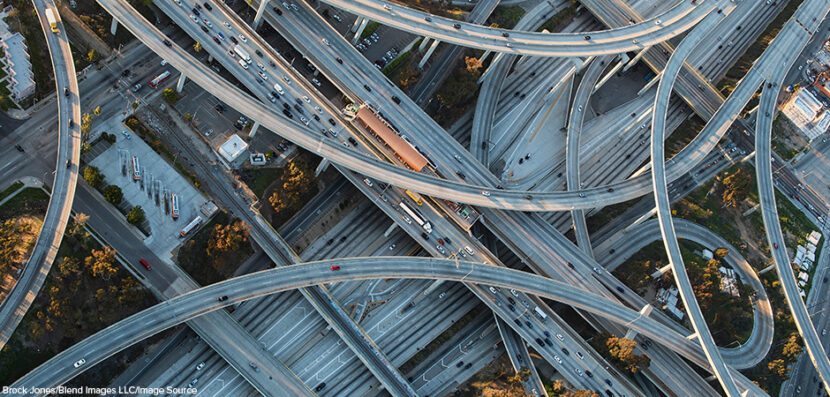
Infrastructure: Build Back Better
Every four years, the American Society of Civil Engineers (ASCE) evaluates the nation’s infrastructure–the roads, bridges, tunnels, dams, airports, railroads and transit and water systems we all depend on every day. Last month, the organization gave U.S. infrastructure a C-minus. Worse, eleven out of the seventeen infrastructure categories were ranked in the “D” range. (The lowest ranked category? Transportation systems.) 46,000 of the nation’s bridges are considered structurally deficient, and dangerous dam and levee failures are becoming more frequent. In addition to this, the group estimates that every American loses about $3,300 per year in automobile damage from potholes, work time lost in traffic jams, and other secondary effects.
Addressing the nation’s infrastructure crisis will require a significant investment of federal dollars. According to the ASCE, the United States is currently spending only about half of what it should to bring these failing systems up to acceptable levels. President Biden hopes to correct that, with an expansive $3 trillion infrastructure investment plan. Here, Election Central takes a closer look.
Build Back Better
President Biden’s campaign slogan was “Build Back Better,” so it’s no surprise that his sweeping infrastructure investment plan is nicknamed the Build Back Better bill. The plan, which the president calls “once in a generation” in scope, does more than just fix broken bridges and tunnels. It calls for maintenance and repair of these systems but it also goes bigger. It proposes investments in education, green energy, job growth, and pro-diversity practices.
Here’s a rough breakdown of how the money will be spent:
- $620 billion on transportation, including repairs and updates on highways, roads, and bridges, as well as electric vehicle incentives.
- $690 billion on buildings and utilities, to make them safer and more energy-efficient.
- $578 billion on jobs, including innovative worker training, research, and development; and
- $400 billion on in-home care, which provides economic benefits for both older/disabled adults, and home health care providers (who are disproportionately women and people of color).
This includes a move toward carbon-free transportation and increased use of green energy (wind and solar power). These critics say the dollars should be invested in traditional infrastructure, such as repairing roads and bridges.
The need to improve the nation’s infrastructure is a frequent area of agreement in American politics. The place where compromise is needed is how much needs to be spent on the improvements and where that money is going to come from. President Biden wants to increase taxes on corporations and people making more than $400,000 annually to raise the money. He says that this tax rate increase would only be effective for fifteen years. And the money raised will be funding improvements that all Americans need. But Sam Graves, a Republican on the House Transportation and Infrastructure Committee says that the legislation goes beyond roads, bridges, and infrastructure to promote other issues such as electric vehicles.
Terry O’Sullivan of the Laborers’ International Union of North America was one representative of the economic sector that supports Biden’s infrastructure package. He said that it will help provide necessary investment in a healthy economy that could promote future job growth.


